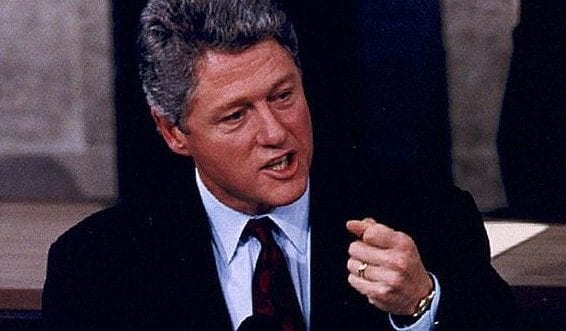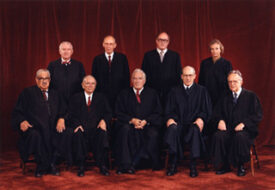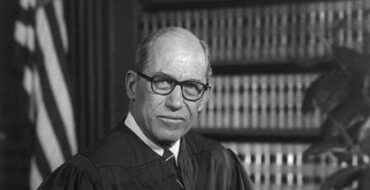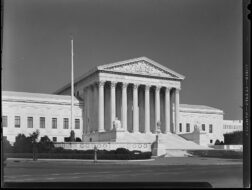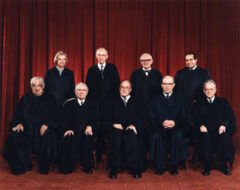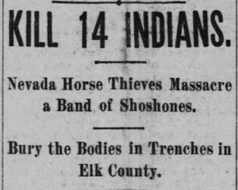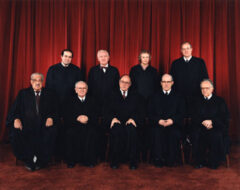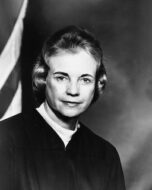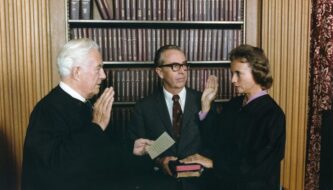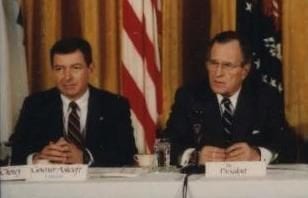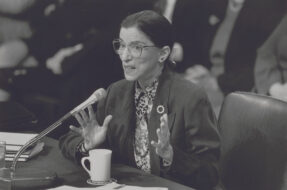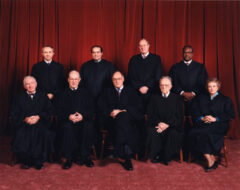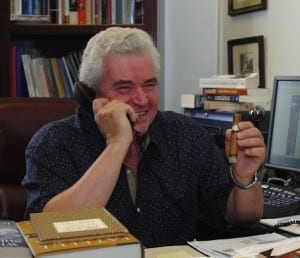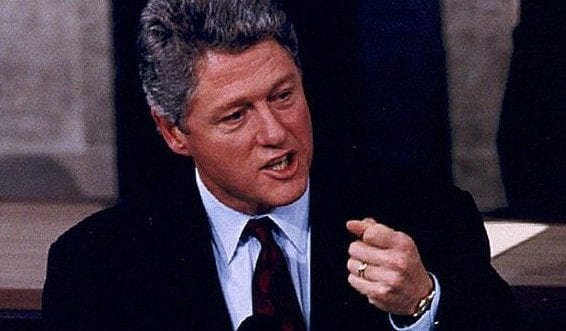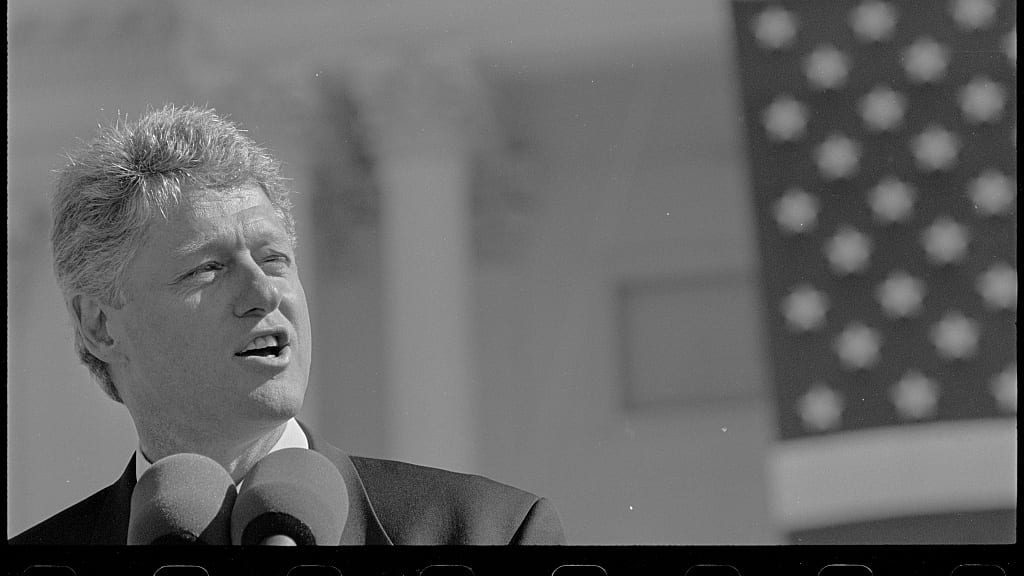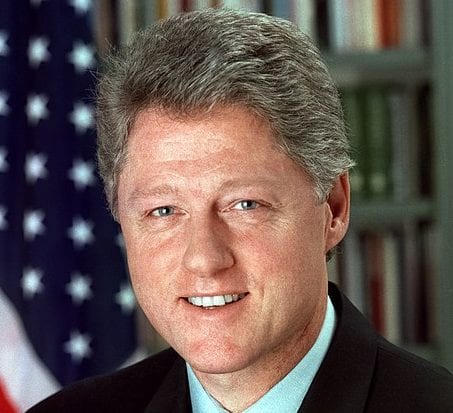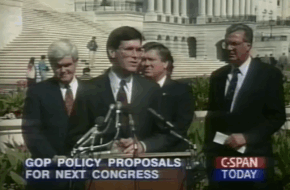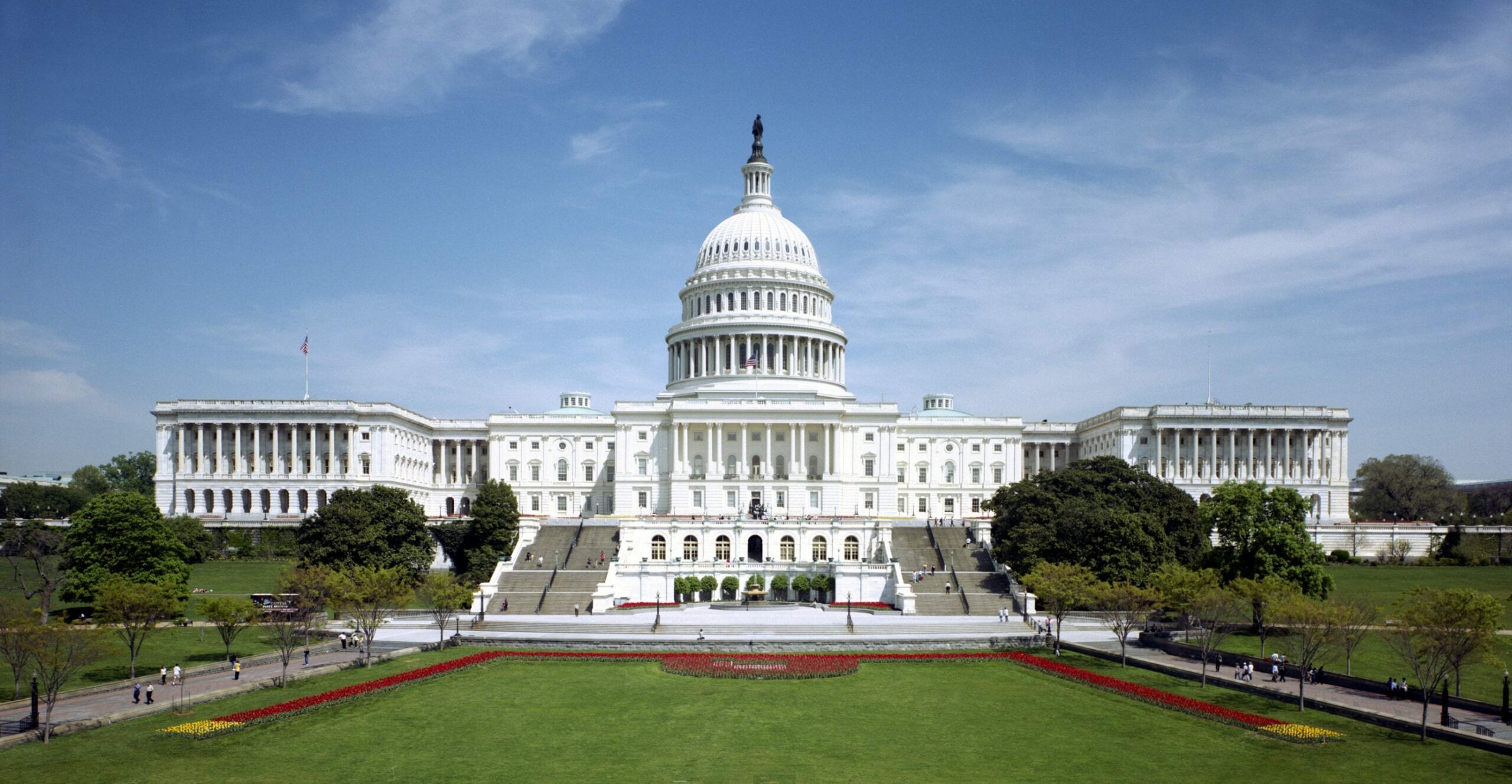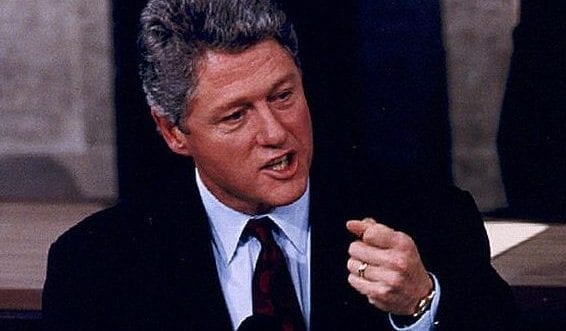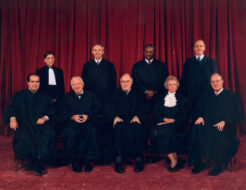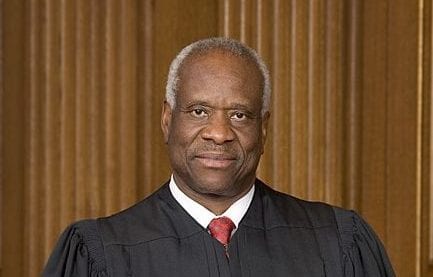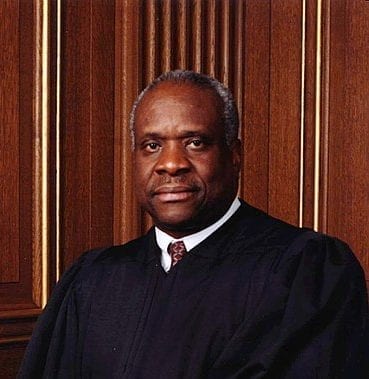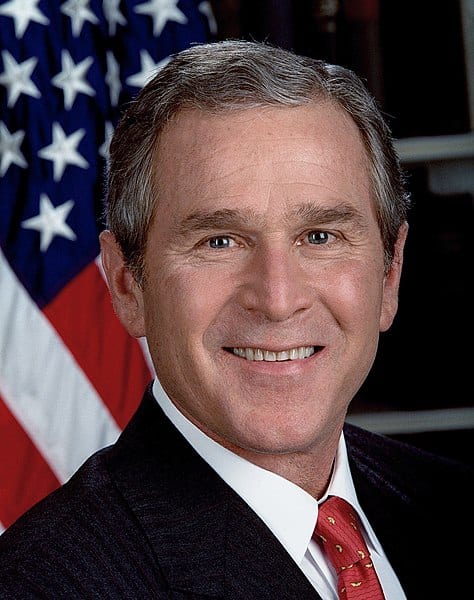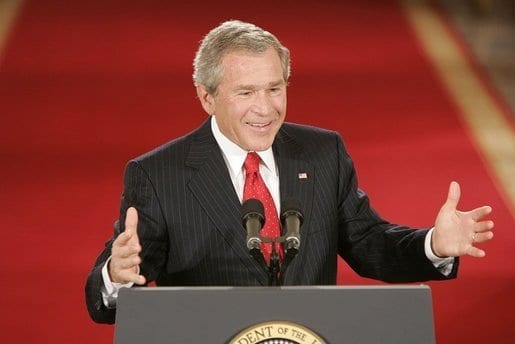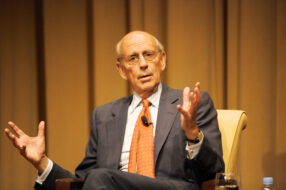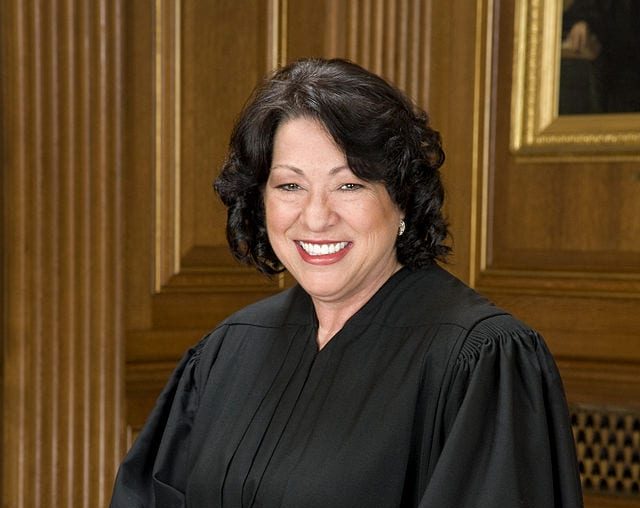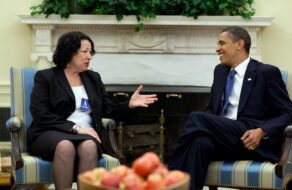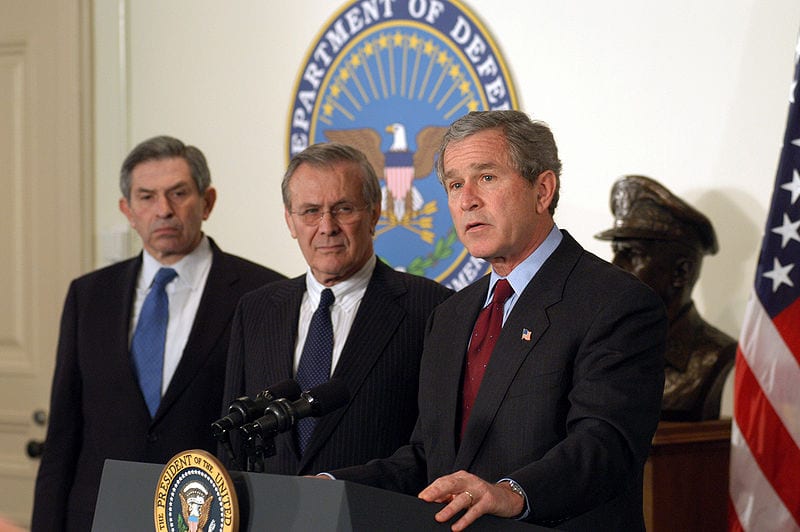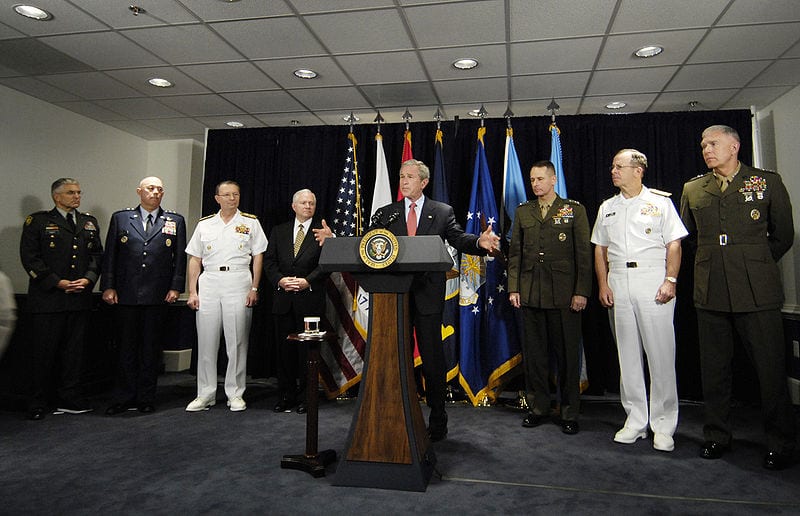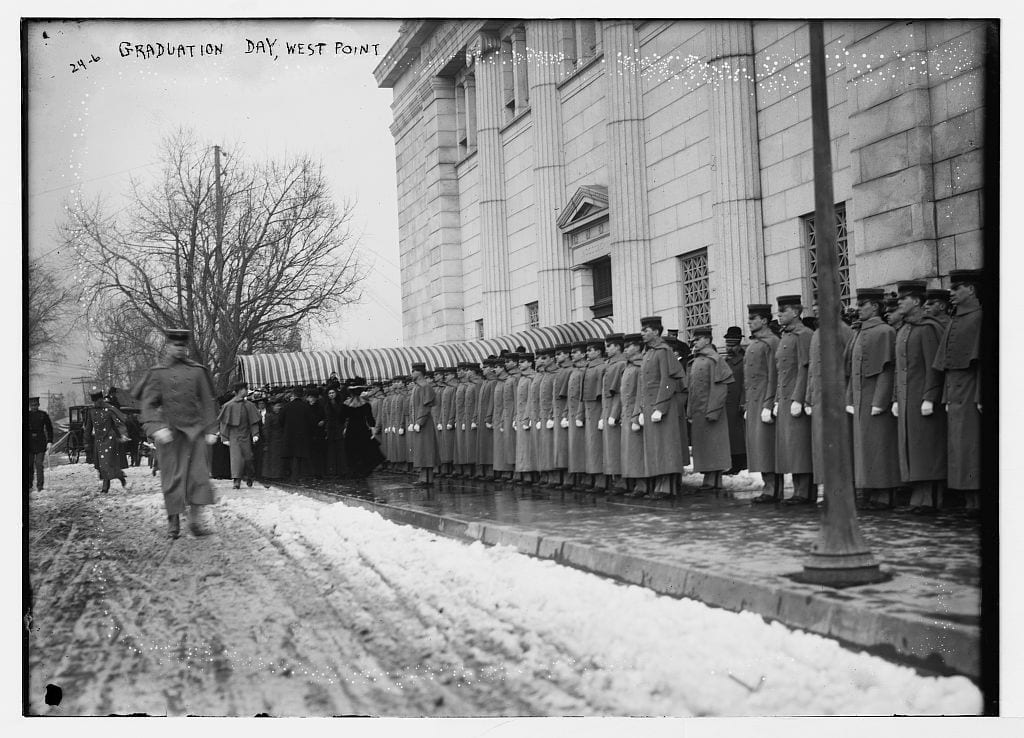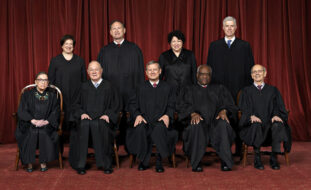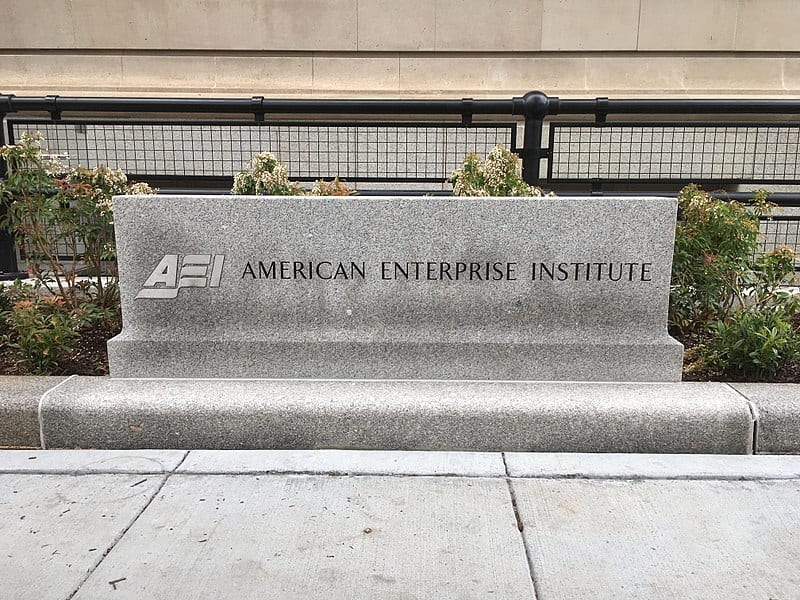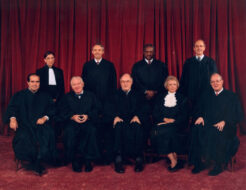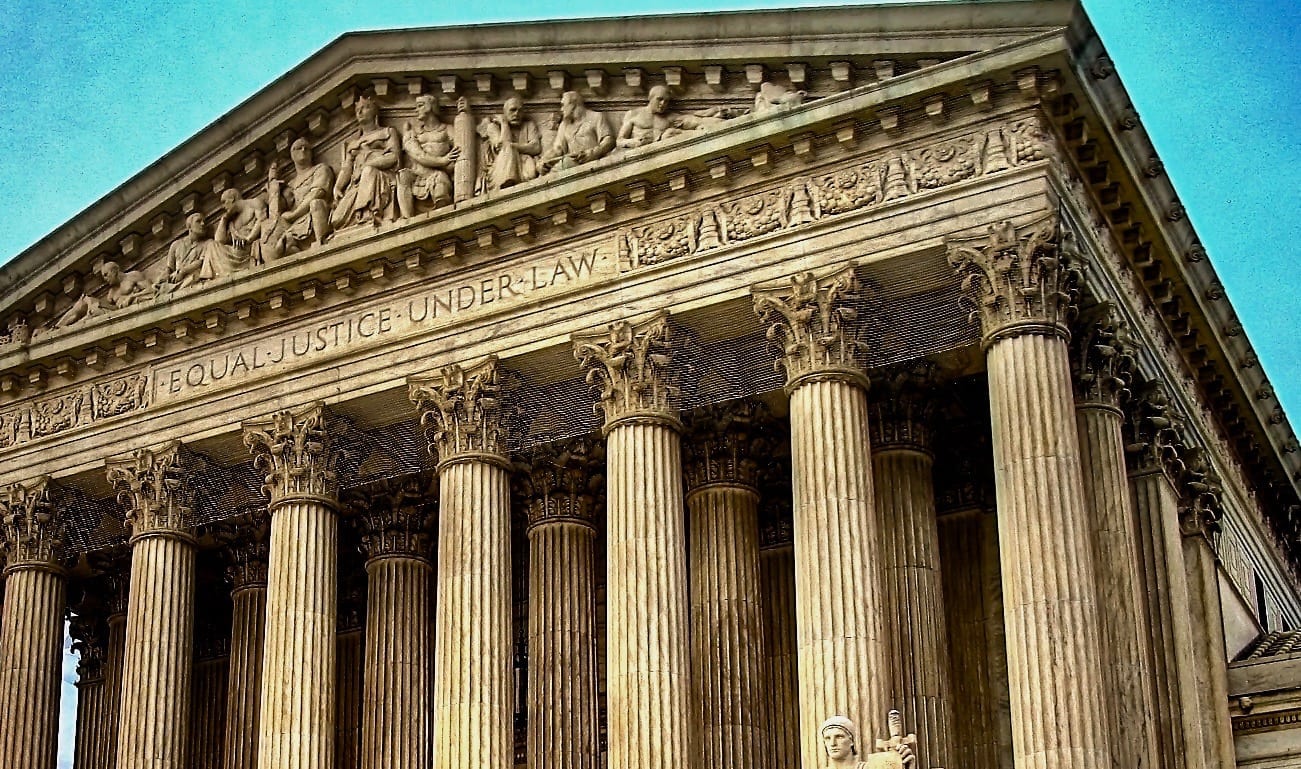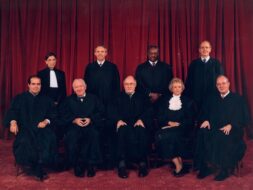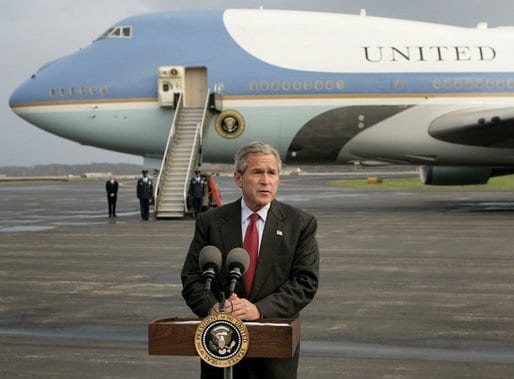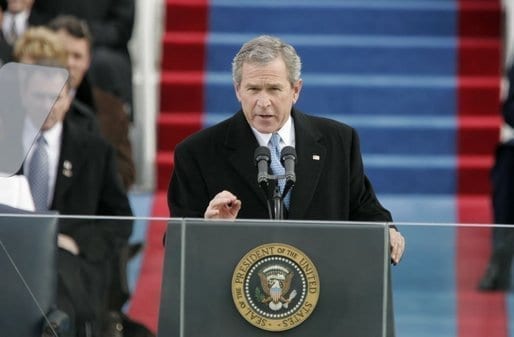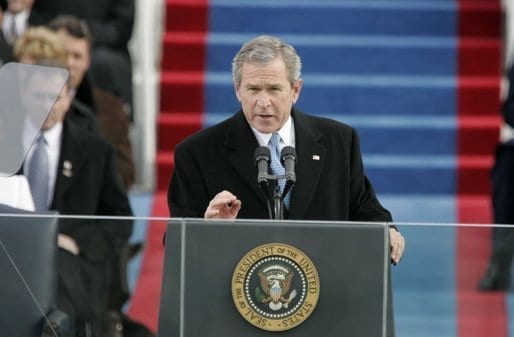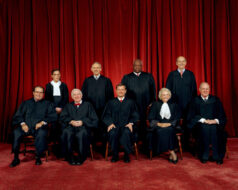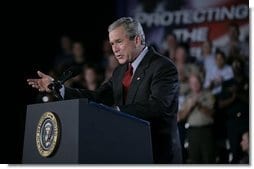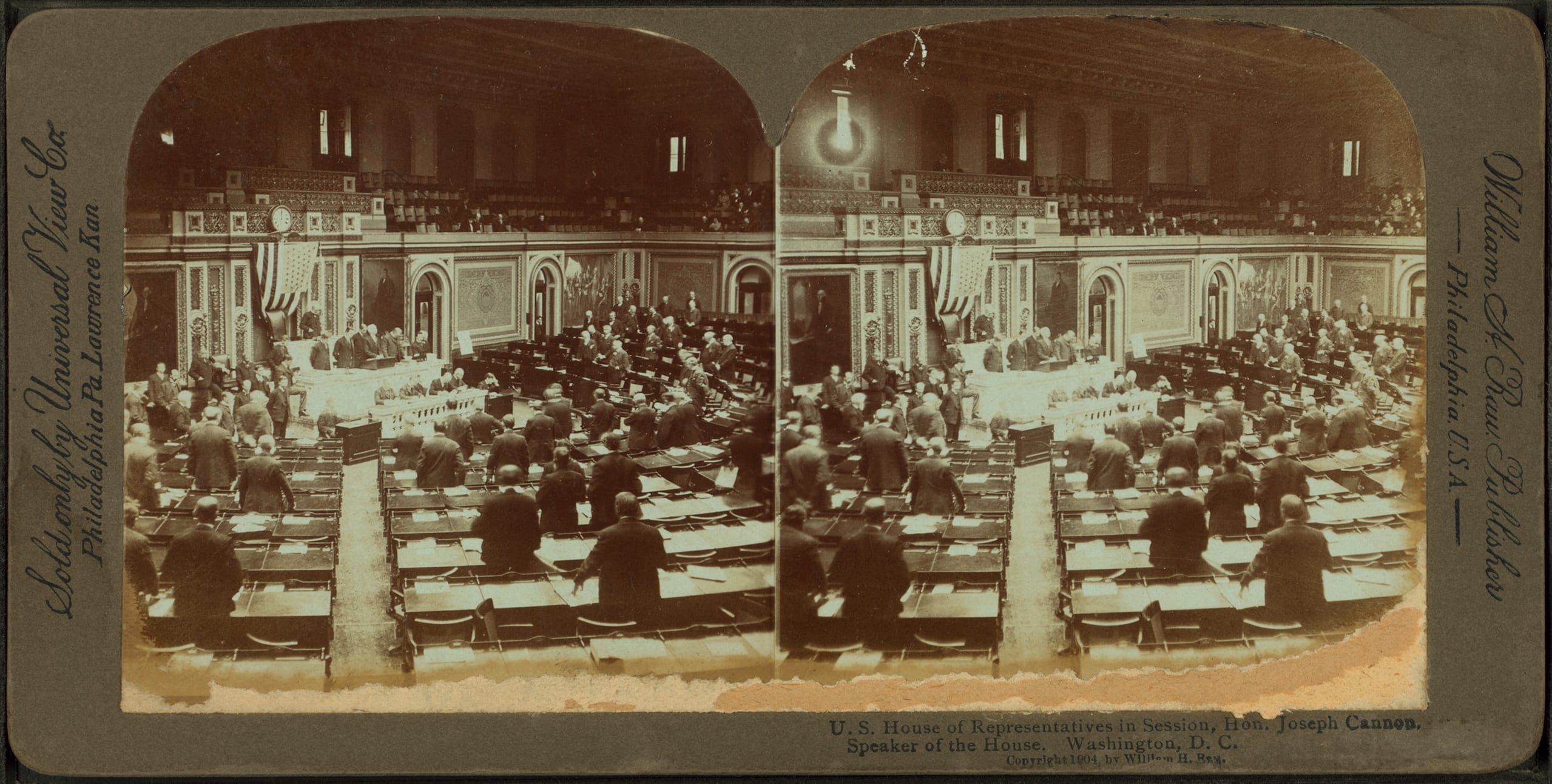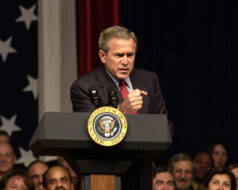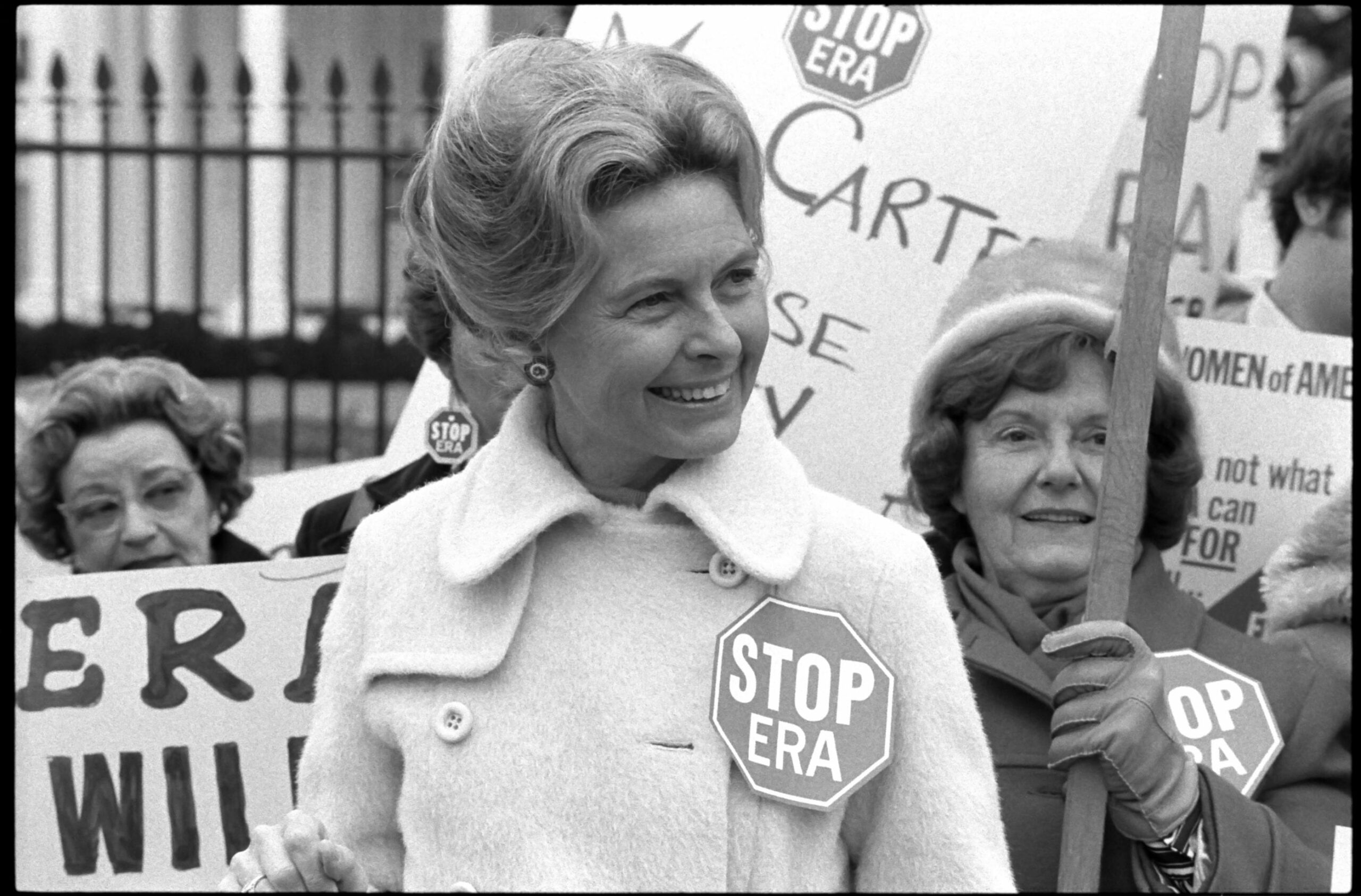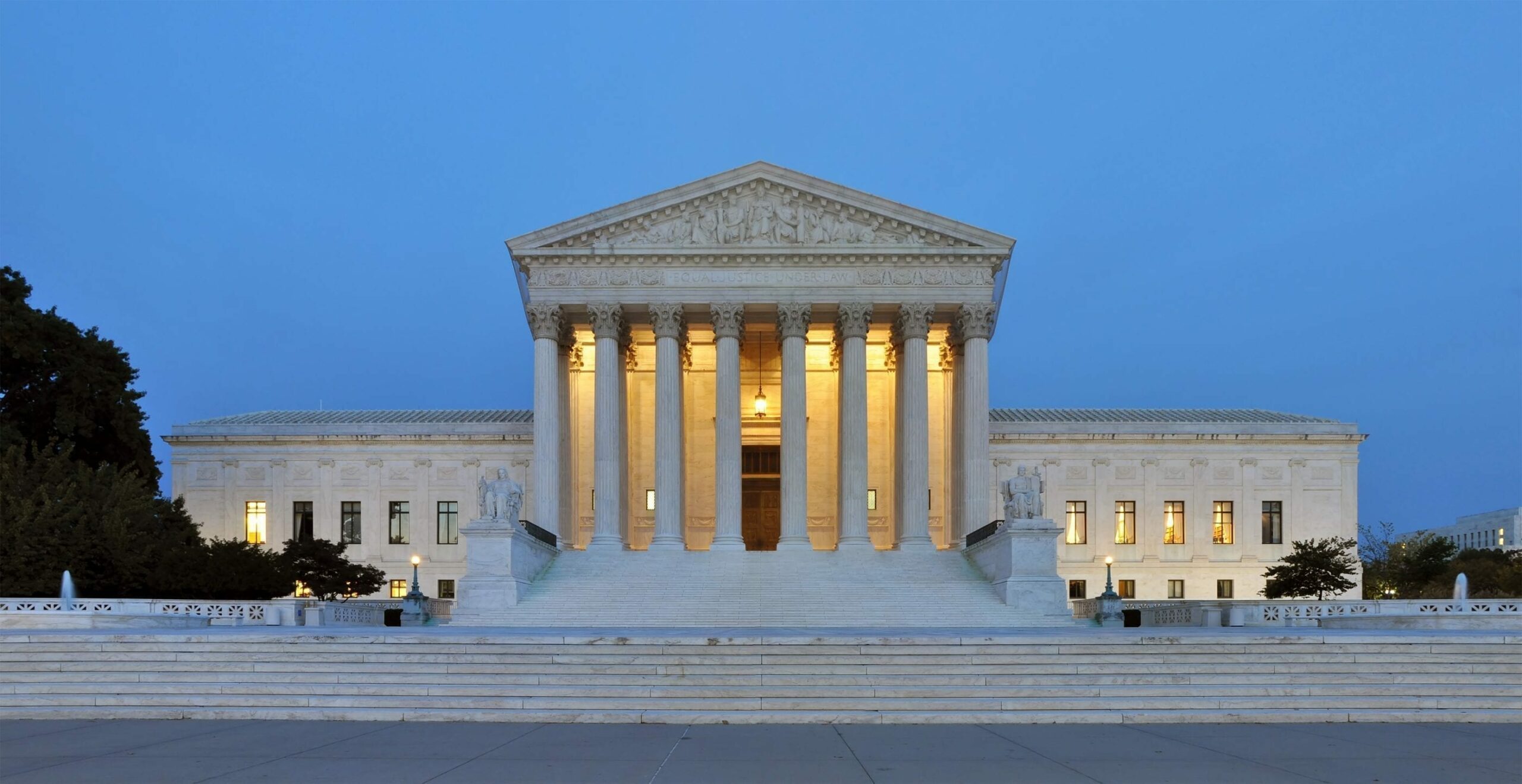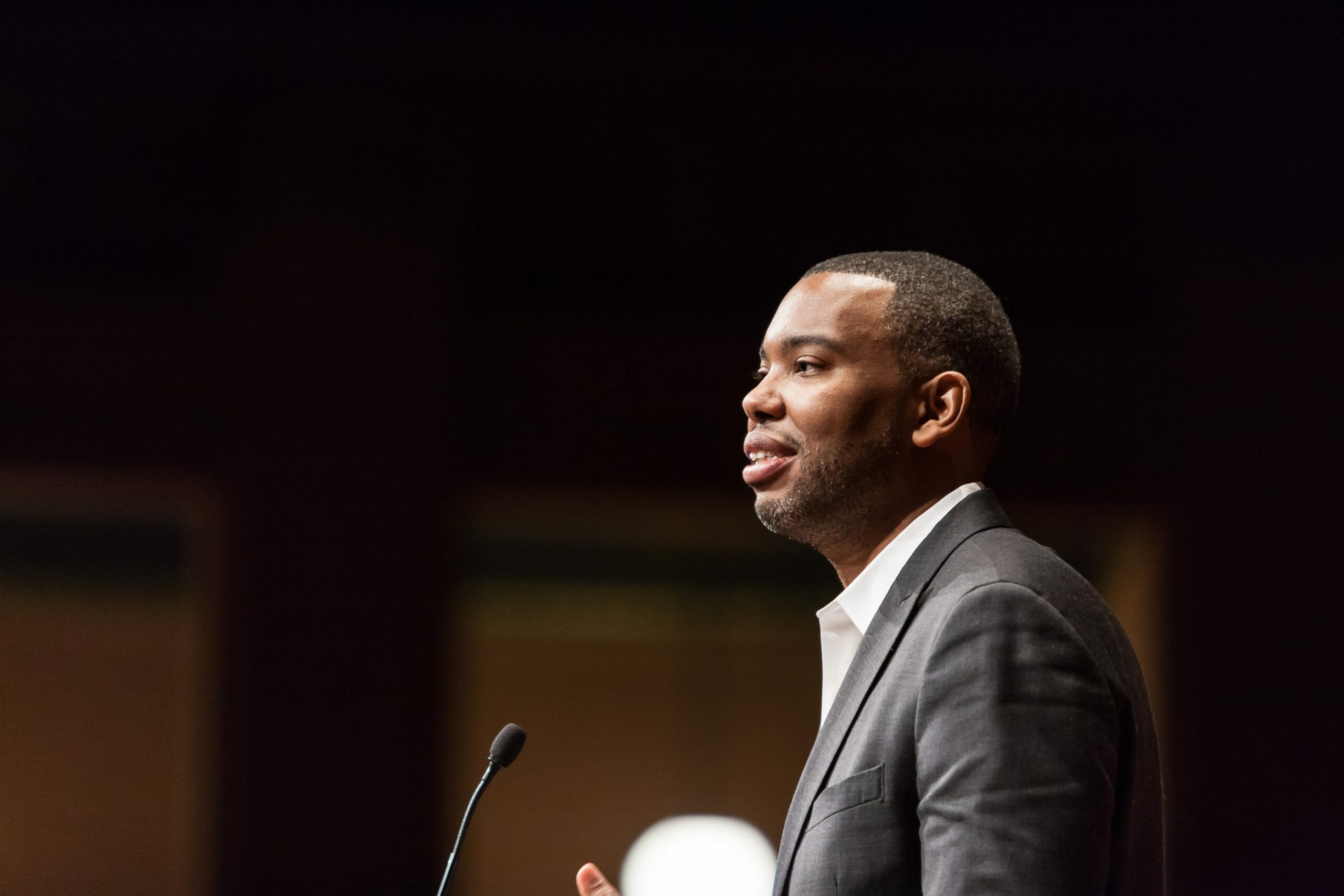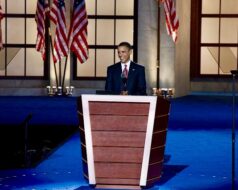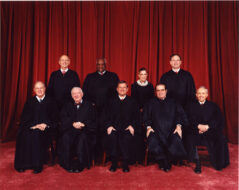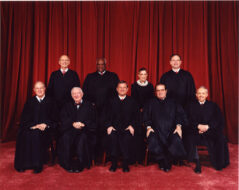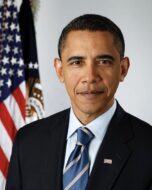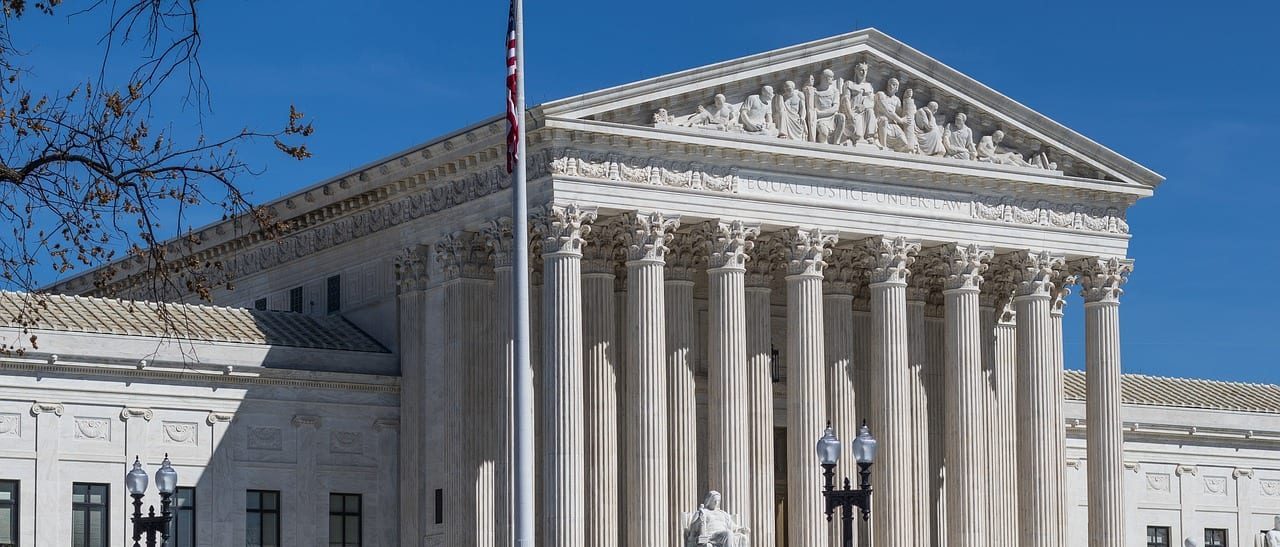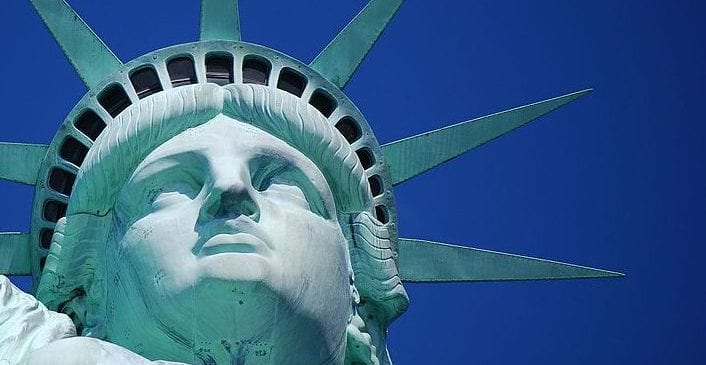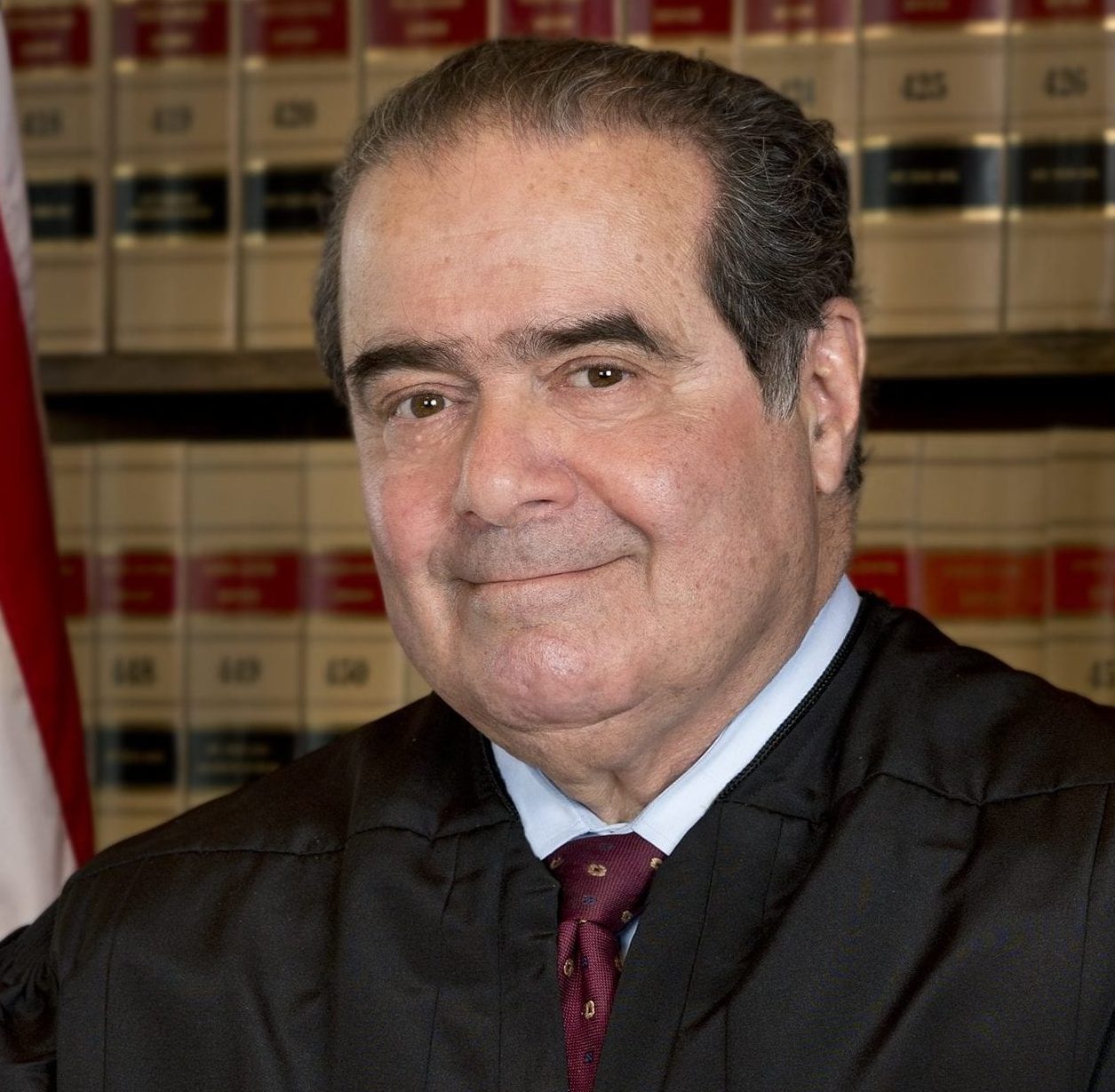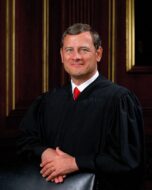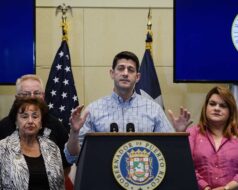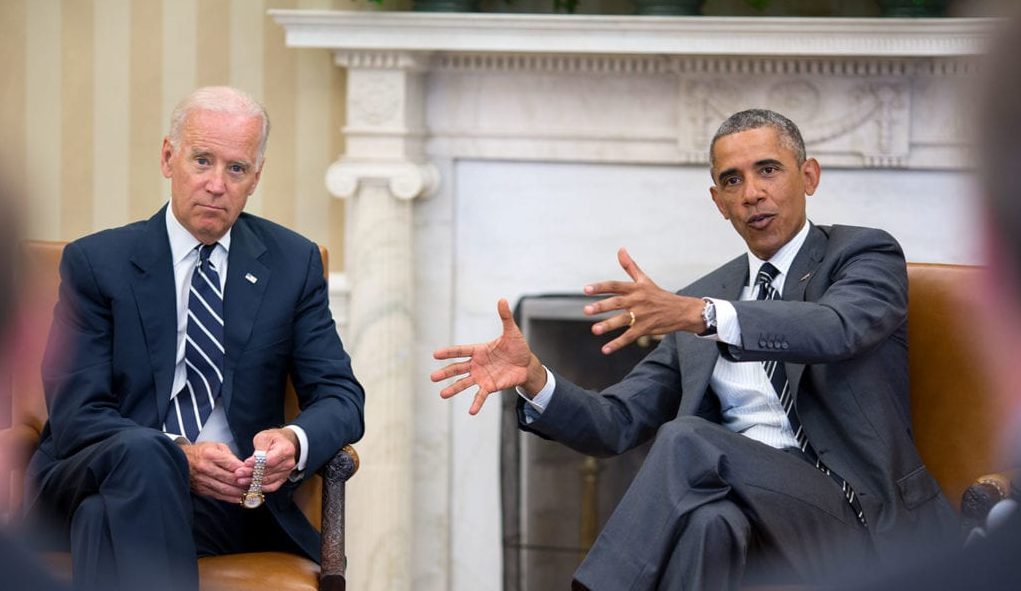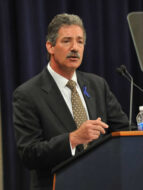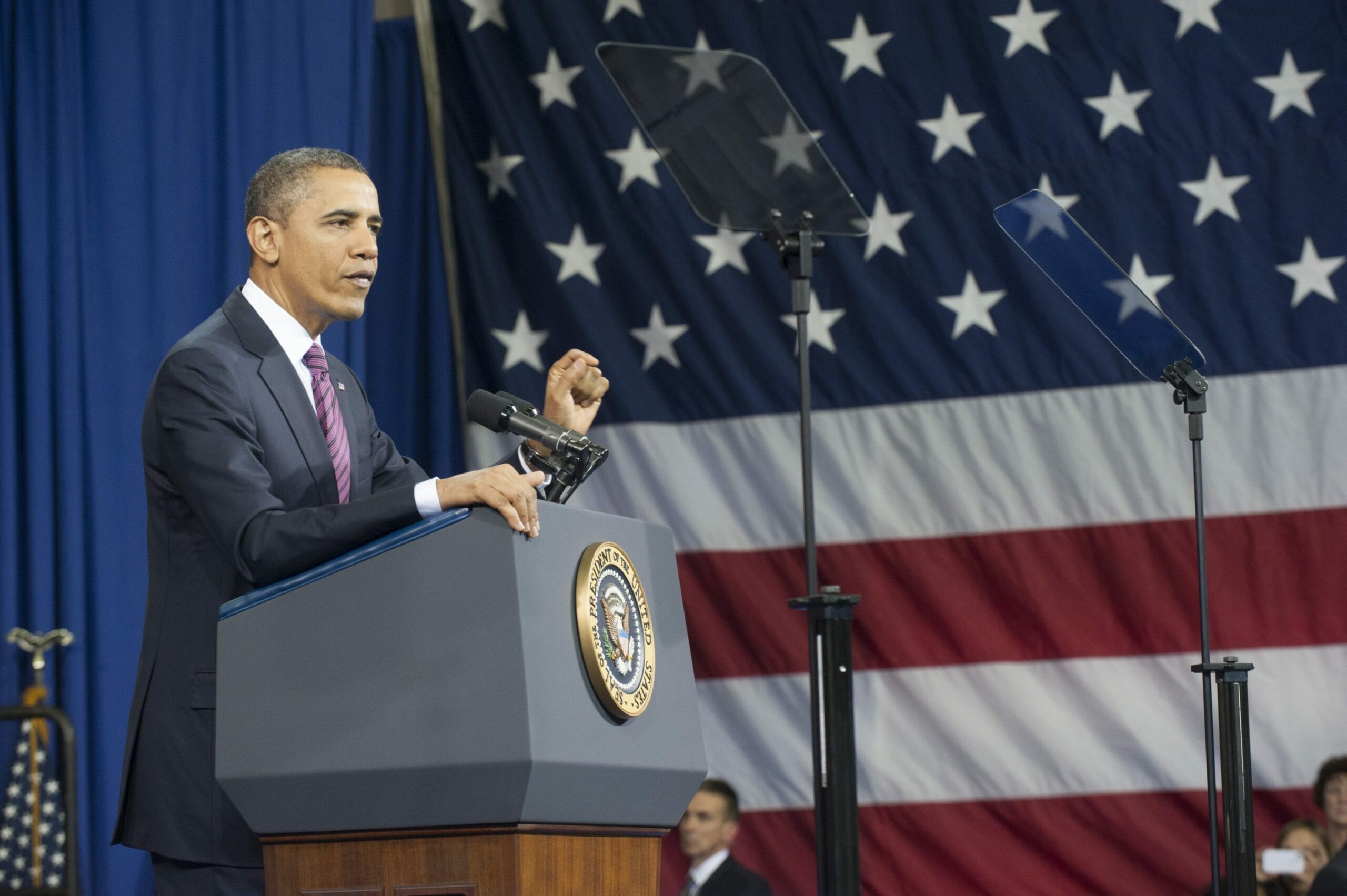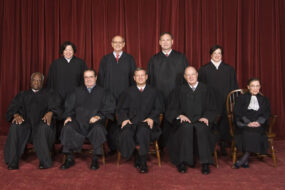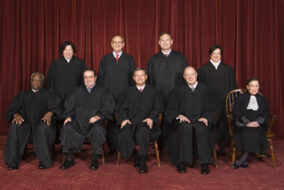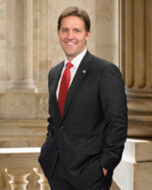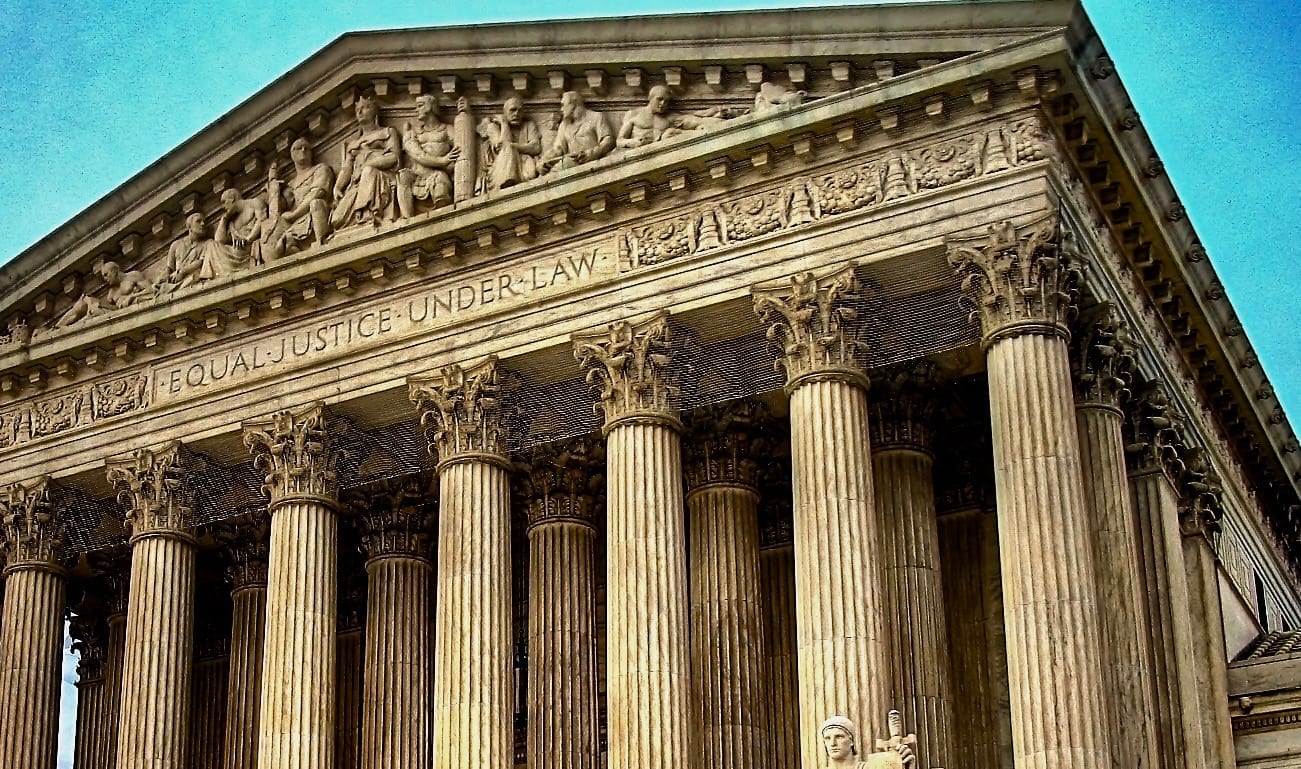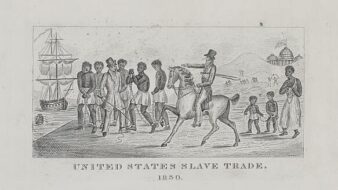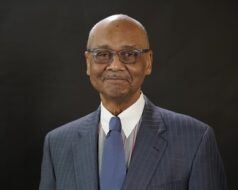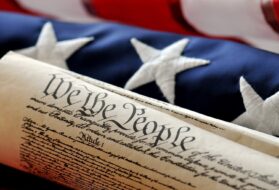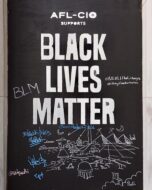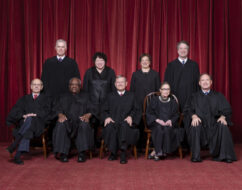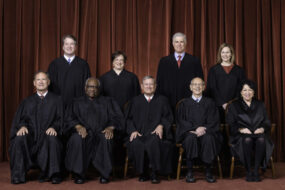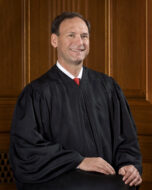

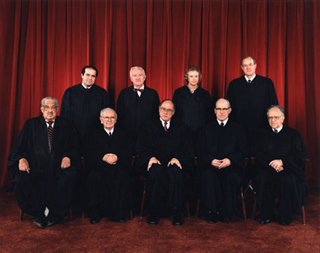
No related resources
Introduction
The State of Oregon denied unemployment benefits to former employees Alfrred Leo Smith (and Galen Black) because they were fired for using an illegal drug, peyote. Smith and Black argued that Oregon was denying them their First Amendment free exercise of religion right because their use of peyote was part of a traditional Native American Church rite. The rest of the facts of the case are found in the Court opinion.
The Oregon Supreme Court ruled that the state’s prohibition of peyote violated Smith and Black’s First Amendment’s Free Exercise Clause rights and thus the state could not deny them unemployment benefits. The U.S. Supreme Court reversed the Oregon Court’s decision 6 to 3. In its ruling, the Court sought to impose some limits to the scope of free religious exercise without compromising the fundamental principle. The justices sought a judicial doctrine that would avoid approving illegal conduct (in this case illegal drug use) but still allow some free exercise exceptions to some laws (e.g., conscientious objection to military service). Compare Justice Antonin Scalia’s opinion with Justice Felix Frankfurter’s dissent in West Virginia v. Barnette and with the Court’s opinion in Reynolds v. United States.
In response to Oregon v. Smith, Congress overwhelmingly passed “The Religious Freedom Restoration Act” (RFRA). https://www.law.cornell.edu/uscode/text/42/chapter-21B. In summary, the Religious Freedom Restoration Act of 1993 prohibits any agency, department, or official of the United States or any state (the government) from substantially burdening a person’s exercise of religion even if the burden results from a rule of general applicability, except that the government may burden a person’s exercise of religion only if it demonstrates that application of the burden to the person: (1) furthers a compelling governmental interest; and (2) is the least restrictive means of furthering that compelling governmental interest. https://www.congress.gov/bill/103rd-congress/house-bill/1308
RFRA and its successors (one version was overturned by the Court as interference with its authority to interpret the first amendment, City of Boerne v. Flores 521 U.S. 507 [1997]) have played a role in its interpretations of religious freedom (e.g., Burwell v. Hobby Lobby).
Source: 494 U.S. 872 (1990), https://www.law.cornell.edu/supremecourt/text/494/872. We have included excerpts of Justice Scalia’s opinion for the Court, Justice Sandra Day O’Connor’s concurring opinion, and Justice Harry A. Blackmun’s dissent. Footnotes added by the editors are preceded by “Ed. note.”
Justice SCALIA delivered the opinion of the Court.
This case requires us to decide whether the Free Exercise Clause of the First Amendment permits the State of Oregon to include religiously inspired peyote use within the reach of its general criminal prohibition on use of that drug, and thus permits the state to deny unemployment benefits to persons dismissed from their jobs because of such religiously inspired use.
I
Oregon law prohibits the knowing or intentional possession of a “controlled substance” unless the substance has been prescribed by a medical practitioner. . . .
A
The Free Exercise Clause of the First Amendment, which has been made applicable to the states by incorporation into the Fourteenth Amendment, see Cantwell v. Connecticut,[1] provides that “Congress shall make no law respecting an establishment of religion, or prohibiting the free exercise thereof. . . . “ The free exercise of religion means, first and foremost, the right to believe and profess whatever religious doctrine one desires. Thus, the First Amendment obviously excludes all “governmental regulation of religious beliefs as such.” Sherbert v. Verner.[2] The government may not compel affirmation of religious belief, punish the expression of religious doctrines it believes to be false, impose special disabilities on the basis of religious views or religious status, or lend its power to one or the other side in controversies over religious authority or dogma
But the “exercise of religion” often involves not only belief and profession but the performance of (or abstention from) physical acts: assembling with others for a worship service, participating in sacramental use of bread and wine, proselytizing, abstaining from certain foods or certain modes of transportation. It would be true, we think (though no case of ours has involved the point), that a state would be “prohibiting the free exercise [of religion]” if it sought to ban such acts or abstentions only when they are engaged in for religious reasons, or only because of the religious belief that they display. It would doubtless be unconstitutional, for example, to ban the casting of “statues that are to be used for worship purposes,” or to prohibit bowing down before a golden calf.
Respondents[3] in the present case, however, seek to carry the meaning of “prohibiting the free exercise [of religion]” one large step further. They contend that their religious motivation for using peyote places them beyond the reach of a criminal law that is not specifically directed at their religious practice, and that is concededly constitutional as applied to those who use the drug for other reasons. They assert, in other words, that “prohibiting the free exercise [of religion]” includes requiring any individual to observe a generally applicable law that requires (or forbids) the performance of an act that his religious belief forbids (or requires). As a textual matter, we do not think the words must be given that meaning. It is no more necessary to regard the collection of a general tax, for example, as “prohibiting the free exercise [of religion]” by those citizens who believe support of organized government to be sinful than it is to regard the same tax as “abridging the freedom . . . of the press” of those publishing companies that must pay the tax as a condition of staying in business. It is a permissible reading of the text, in the one case as in the other, to say that, if prohibiting the exercise of religion (or burdening the activity of printing) is not the object of the tax, but merely the incidental effect of a generally applicable and otherwise valid provision, the First Amendment has not been offended.
Our decisions reveal that the latter reading is the correct one. We have never held that an individual’s religious beliefs excuse him from compliance with an otherwise valid law prohibiting conduct that the state is free to regulate. On the contrary, the record of more than a century of our free exercise jurisprudence contradicts that proposition. As described succinctly by Justice Frankfurter in Minersville School Dist. Bd. of Educ. v. Gobitis:
Conscientious scruples have not, in the course of the long struggle for religious toleration, relieved the individual from obedience to a general law not aimed at the promotion or restriction of religious beliefs. The mere possession of religious convictions which contradict the relevant concerns of a political society does not relieve the citizen from the discharge of political responsibilities.[4]
We first had occasion to assert that principle in Reynolds v. United States, where we rejected the claim that criminal laws against polygamy could not be constitutionally applied to those whose religion commanded the practice. “Laws,” we said,
are made for the government of actions, and while they cannot interfere with mere religious belief and opinions, they may with practices. . . . Can a man excuse his practices to the contrary because of his religious belief? To permit this would be to make the professed doctrines of religious belief superior to the law of the land, and in effect to permit every citizen to become a law unto himself.
Subsequent decisions have consistently held that the right of free exercise does not relieve an individual of the obligation to comply with a “valid and neutral law of general applicability on the ground that the law proscribes (or prescribes) conduct that his religion prescribes (or proscribes).”[5] In Prince v. Massachusetts, 321 U.S. 158 (1944), we held that a mother could be prosecuted under the child labor laws for using her children to dispense literature in the streets, her religious motivation notwithstanding. We found no constitutional infirmity in “excluding [these children] from doing there what no other children may do.” In Braunfeld v. Brown, we upheld Sunday closing laws against the claim that they burdened the religious practices of persons whose religions compelled them to refrain from work on other days. In Gillette v. United States we sustained the military selective service system against the claim that it violated free exercise by conscripting persons who opposed a particular war on religious grounds.
Our most recent decision involving a neutral, generally applicable regulatory law that compelled activity forbidden by an individual’s religion was United States v. Lee, 455 U.S. at 258-261. There, an Amish employer, on behalf of himself and his employees, sought exemption from collection and payment of Social Security taxes on the ground that the Amish faith prohibited participation in governmental support programs. We rejected the claim that an exemption was constitutionally required. There would be no way, we observed, to distinguish the Amish believer’s objection to Social Security taxes from the religious objections that others might have to the collection or use of other taxes. . . .
The only decisions in which we have held that the First Amendment bars application of a neutral, generally applicable law to religiously motivated action have involved not the Free Exercise Clause alone, but the Free Exercise Clause in conjunction with other constitutional protections, such as freedom of speech and of the press. . . .
The present case does not present such a hybrid situation, but a free exercise claim unconnected with any communicative activity or parental right. Respondents urge us to hold, quite simply, that when otherwise prohibitable conduct is accompanied by religious convictions, not only the convictions but the conduct itself must be free from governmental regulation. We have never held that, and decline to do so now. There being no contention that Oregon’s drug law represents an attempt to regulate religious beliefs, the communication of religious beliefs, or the raising of one’s children in those beliefs, the rule to which we have adhered ever since Reynolds plainly controls.
B
Respondents argue that, even though exemption from generally applicable criminal laws need not automatically be extended to religiously motivated actors, at least the claim for areligious exemption must be evaluated under the balancing test set forth in Sherbert v. Verner.[6] Under the Sherbert test, governmental actions that substantially burden a religious practice must be justified by a compelling governmental interest. Applying that test, we have, on three occasions, invalidated state unemployment compensation rules that conditioned the availability of benefits upon an applicant’s willingness to work under conditions forbidden by his religion. We have never invalidated any governmental action on the basis of the Sherbert test except the denial of unemployment compensation. Although we have sometimes purported to apply the Sherbert test in contexts other than that, we have always found the test satisfied. . . .
Even if we were inclined to breathe into Sherbert some life beyond the unemployment compensation field, we would not apply it to require exemptions from a generally applicable criminal law. The Sherbert test, it must be recalled, was developed in a context that lent itself to individualized governmental assessment of the reasons for the relevant conduct. . . .
Whether or not the decisions are that limited, they at least have nothing to do with an across-the-board criminal prohibition on a particular form of conduct. Although, as noted earlier, we have sometimes used the Sherbert test to analyze free exercise challenges to such laws, we have never applied the test to invalidate one. We conclude today that the sounder approach, and the approach in accord with the vast majority of our precedents, is to hold the test inapplicable to such challenges. The government’s ability to enforce generally applicable prohibitions of socially harmful conduct, like its ability to carry out other aspects of public policy, “cannot depend on measuring the effects of a governmental action on a religious objector’s spiritual development.” Lyng, supra, 485 U.S. at 451. To make an individual’s obligation to obey such a law contingent upon the law’s coincidence with his religious beliefs, except where the state’s interest is “compelling”—permitting him, by virtue of his beliefs, “to become a law unto himself,” Reynolds v. United States—contradicts both constitutional tradition and common sense.
The “compelling government interest” requirement seems benign, because it is familiar from other fields. But using it as the standard that must be met before the government may accord different treatment on the basis of race, or before the government may regulate the content of speech, is not remotely comparable to using it for the purpose asserted here. What it produces in those other fields— equality of treatment, and an unrestricted flow of contending speech—are constitutional norms; what it would produce here—a private right to ignore generally applicable laws—is a constitutional anomaly.
Nor is it possible to limit the impact of respondents’ proposal by requiring a “compelling state interest” only when the conduct prohibited is “central” to the individual’s religion. It is no more appropriate for judges to determine the “centrality” of religious beliefs before applying a “compelling interest” test in the free exercise field than it would be for them to determine the “importance” of ideas before applying the “compelling interest” test in the free speech field. What principle of law or logic can be brought to bear to contradict a believer’s assertion that a particular act is “central” to his personal faith? Judging the centrality of different religious practices is akin to the unacceptable “business of evaluating the relative merits of differing religious claims.” United States v. Lee, 455 U.S. at 263 n. 2. . . . Repeatedly and in many different contexts, we have warned that courts must not presume to determine the place of a particular belief in a religion or the plausibility of a religious claim.
If the “compelling interest” test is to be applied at all, then, it must be applied across the board, to all actions thought to be religiously commanded. Moreover, if “compelling interest” really means what it says (and watering it down here would subvert its rigor in the other fields where it is applied), many laws will not meet the test. Any society adopting such a system would be courting anarchy, but that danger increases in direct proportion to the society’s diversity of religious beliefs, and its determination to coerce or suppress none of them. Precisely because “we are a cosmopolitan nation made up of people of almost every conceivable religious preference,” Braunfeld v. Brown, 366 U.S. at 606, and precisely because we value and protect that religious divergence, we cannot afford the luxury of deeming presumptively invalid, as applied to the religious objector, every regulation of conduct that does not protect an interest of the highest order. The rule respondents favor would open the prospect of constitutionally required religious exemptions from civic obligations of almost every conceivable kind—ranging from compulsory military service to the payment of taxes, to health and safety regulation such as manslaughter and child neglect laws, compulsory vaccination laws, drug laws, and traffic laws, to social welfare legislation such as minimum wage laws, child labor laws, animal cruelty laws, environmental protection laws, and laws providing for equality of opportunity for the races. The First Amendment’s protection of religious liberty does not require this.
Values that are protected against government interference through enshrinement in the Bill of Rights are not thereby banished from the political process. Just as a society that believes in the negative protection accorded to the press by the First Amendment is likely to enact laws that affirmatively foster the dissemination of the printed word, so also a society that believes in the negative protection accorded to religious belief can be expected to be solicitous of that value in its legislation as well. It is therefore not surprising that a number of states have made an exception to their drug laws for sacramental peyote use. But to say that a nondiscriminatory religious practice exemption is permitted, or even that it is desirable, is not to say that it is constitutionally required, and that the appropriate occasions for its creation can be discerned by the courts. It may fairly be said that leaving accommodation to the political process will place at a relative disadvantage those religious practices that are not widely engaged in; but that unavoidable consequence of democratic government must be preferred to a system in which each conscience is a law unto itself or in which judges weigh the social importance of all laws against the centrality of all religious beliefs.
. . .
Because respondents’ ingestion of peyote was prohibited under Oregon law, and because that prohibition is constitutional, Oregon may, consistent with the Free Exercise Clause, deny respondents unemployment compensation when their dismissal results from use of the drug. The decision of the Oregon Supreme Court is accordingly reversed.
Justice O’CONNOR, with whom Justice BRENNAN, Justice MARSHALL, and Justice BLACKMUN join as to Parts I and II, concurring in the judgment.
Although I agree with the result the Court reaches in this case, I cannot join its opinion. In my view, today’s holding dramatically departs from well settled First Amendment jurisprudence, appears unnecessary to resolve the question presented, and is incompatible with our nation’s fundamental commitment to individual religious liberty.
. . .
II
The Court today extracts from our long history of free exercise precedents the single categorical rule that “if prohibiting the exercise of religion . . . is . . . merely the incidental effect of a generally applicable and otherwise valid provision, the First Amendment has not been offended.” Indeed, the Court holds that, where the law is a generally applicable criminal prohibition, our usual free exercise jurisprudence does not even apply. To reach this sweeping result, however, the Court must not only give a strained reading of the First Amendment but must also disregard our consistent application of free exercise doctrine to cases involving generally applicable regulations that burden religious conduct.
A
The Free Exercise Clause of the First Amendment commands that “Congress shall make no law . . . prohibiting the free exercise [of religion].”. . . Because the First Amendment does not distinguish between religious belief and religious conduct, conduct motivated by sincere religious belief, like the belief itself, must therefore be at least presumptively protected by the Free Exercise Clause.
The Court today, however, interprets the clause to permit the government to prohibit, without justification, conduct mandated by an individual’s religious beliefs, so long as that prohibition is generally applicable. But a law that prohibits certain conduct—conduct that happens to be an act of worship for someone—manifestly does prohibit that person’s free exercise of his religion. A person who is barred from engaging in religiously motivated conduct is barred from freely exercising his religion. Moreover, that person is barred from freely exercising his religion regardless of whether the law prohibits the conduct only when engaged in for religious reasons, only by members of that religion, or by all persons. It is difficult to deny that a law that prohibits religiously motivated conduct, even if the law is generally applicable, does not at least implicate First Amendment concerns.
The Court responds that generally applicable laws are “one large step” removed from laws aimed at specific religious practices. The First Amendment, however, does not distinguish between laws that are generally applicable and laws that target particular religious practices. Indeed, few states would be so naive as to enact a law directly prohibiting or burdening a religious practice as such. Our free exercise cases have all concerned generally applicable laws that had the effect of significantly burdening a religious practice. If the First Amendment is to have any vitality, it ought not be construed to cover only the extreme and hypothetical situation in which a state directly targets a religious practice. . . .
To say that a person’s right to free exercise has been burdened, of course, does not mean that he has an absolute right to engage in the conduct. Under our established First Amendment jurisprudence, we have recognized that the freedom to act, unlike the freedom to believe, cannot be absolute. Instead, we have respected both the First Amendment’s express textual mandate and the governmental interest in regulation of conduct by requiring the government to justify any substantial burden on religiously motivated conduct by a compelling state interest and by means narrowly tailored to achieve that interest. The compelling interest test effectuates the First Amendment’s command that religious liberty is an independent liberty, that it occupies a preferred position, and that the Court will not permit encroachments upon this liberty, whether direct or indirect, unless required by clear and compelling governmental interests “of the highest order,” Wisconsin v. Yoder.[7]
The Court attempts to support its narrow reading of the clause by claiming that
“[W]e have never held that an individual’s religious beliefs excuse him from compliance with an otherwise valid law prohibiting conduct that the state is free to regulate.” But as the Court later notes, as it must, in cases such as Cantwell[8] and Yoder, we have in fact interpreted the Free Exercise Clause to forbid application of a generally applicable prohibition to religiously motivated conduct. Indeed, in Yoder we expressly rejected the interpretation the Court now adopts. . . .
The Court endeavors to escape from our decisions in Cantwell and Yoder by labeling them “hybrid” decisions, but there is no denying that both cases expressly relied on the Free Exercise Clause, and that we have consistently regarded those cases as part of the mainstream of our free exercise jurisprudence. Moreover, in each of the other cases cited by the Court to support its categorical rule, we rejected the particular constitutional claims before us only after carefully weighing the competing interests. That we rejected the free exercise claims in those cases hardly calls into question the applicability of First Amendment doctrine in the first place. Indeed, it is surely unusual to judge the vitality of a constitutional doctrine by looking to the win-loss record of the plaintiffs who happen to come before us.
B
Respondents, of course, do not contend that their conduct is automatically immune from all governmental regulation simply because it is motivated by their sincere religious beliefs. The Court’s rejection of that argument might therefore be regarded as merely harmless dictum. Rather, respondents invoke our traditional compelling interest test to argue that the Free Exercise Clause requires the state to grant them a limited exemption from its general criminal prohibition against the possession of peyote. The Court today, however, denies them even the opportunity to make that argument, concluding that “the sounder approach, and the approach in accord with the vast majority of our precedents, is to hold the [compelling interest] test inapplicable to” challenges to general criminal prohibitions.
In my view, however, the essence of a free exercise claim is relief from a burden imposed by government on religious practices or beliefs, whether the burden is imposed directly through laws that prohibit or compel specific religious practices, or indirectly through laws that, in effect, make abandonment of one’s own religion or conformity to the religious beliefs of others the price of an equal place in the civil community. . . . I would have thought it beyond argument that such laws implicate free exercise concerns. . . .
. . . Once it has been shown that a government regulation or criminal prohibition burdens the free exercise of religion, we have consistently asked the government to demonstrate that unbending application of its regulation to the religious objector “is essential to accomplish an overriding governmental interest,” Lee, 455 U.S. at 257-258, or represents “the least restrictive means of achieving some compelling state interest,” Thomas, 450 U.S. at 718.[9] To me, the sounder approach—the approach more consistent with our role as judges to decide each case on its individual merits—is to apply this test in each case to determine whether the burden on the specific plaintiffs before us is constitutionally significant, and whether the particular criminal interest asserted by the state before us is compelling. Even if, as an empirical matter, a government’s criminal laws might usually serve a compelling interest in health, safety, or public order, the First Amendment at least requires a case-by-case determination of the question, sensitive to the facts of each particular claim. Given the range of conduct that a state might legitimately make criminal, we cannot assume, merely because a law carries criminal sanctions and is generally applicable, that the First Amendment never requires the state to grant a limited exemption for religiously motivated conduct. . . .
The Court today gives no convincing reason to depart from settled First Amendment jurisprudence. There is nothing talismanic about neutral laws of general applicability or general criminal prohibitions, for laws neutral toward religion can coerce a person to violate his religious conscience or intrude upon his religious duties just as effectively as laws aimed at religion. Although the Court suggests that the compelling interest test, as applied to generally applicable laws, would result in a “constitutional anomaly,” the First Amendment unequivocally makes freedom of religion, like freedom from race discrimination and freedom of speech, a “constitutional nor[m],” not an “anomaly.” As the language of the clause itself makes clear, an individual’s free exercise of religion is a preferred constitutional activity. . . . The Court’s parade of horribles not only fails as a reason for discarding the compelling interest test, it instead demonstrates just the opposite: that courts have been quite capable of applying our free exercise jurisprudence to strike sensible balances between religious liberty and competing state interests.
Finally, the Court today suggests that the disfavoring of minority religions is an “unavoidable consequence” under our system of government, and that accommodation of such religions must be left to the political process. In my view, however, the First Amendment was enacted precisely to protect the rights of those whose religious practices are not shared by the majority and may be viewed with hostility. The history of our free exercise doctrine amply demonstrates the harsh impact majoritarian rule has had on unpopular or emerging religious groups such as the Jehovah’s Witnesses and the Amish. . . . The compelling interest test reflects the First Amendment’s mandate of preserving religious liberty to the fullest extent possible in a pluralistic society. For the Court to deem this command a “luxury” is to denigrate “[t]he very purpose of a Bill of Rights.”
III
The Court’s holding today not only misreads settled First Amendment precedent; it appears to be unnecessary to this case. I would reach the same result applying our established free exercise jurisprudence.
A
There is no dispute that Oregon’s criminal prohibition of peyote places a severe burden on the ability of respondents to freely exercise their religion. Peyote is a sacrament of the Native American Church, and is regarded as vital to respondents’ ability to practice their religion. . . .
There is also no dispute that Oregon has a significant interest in enforcing laws that control the possession and use of controlled substances by its citizens. . . . In light of our recent decisions holding that the governmental interests in the collection of income tax, a comprehensive social security system, and military conscription are compelling, respondents do not seriously dispute that Oregon has a compelling interest in prohibiting the possession of peyote by its citizens.
B
Thus, the critical question in this case is whether exempting respondents from the state’s general criminal prohibition “will unduly interfere with fulfillment of the governmental interest” Lee, supra, 455 U.S. at 259. . . . Because the health effects caused by the use of controlled substances exist regardless of the motivation of the user, the use of such substances, even for religious purposes, violates the very purpose of the laws that prohibit them. Moreover, in view of the societal interest in preventing trafficking in controlled substances, uniform application of the criminal prohibition at issue is essential to the effectiveness of Oregon’s stated interest in preventing any possession of peyote.
For these reasons, I believe that granting a selective exemption in this case would seriously impair Oregon’s compelling interest in prohibiting possession of peyote by its citizens. Under such circumstances, the Free Exercise Clause does not require the state to accommodate respondents’ religiously motivated conduct. . . .
I would therefore adhere to our established free exercise jurisprudence and hold that the state in this case has a compelling interest in regulating peyote use by its citizens, and that accommodating respondents’ religiously motivated conduct “will unduly interfere with fulfillment of the governmental interest.” Lee, 455 U.S. at 259. Accordingly, I concur in the judgment of the Court.
Justice BLACKMUN, with whom Justice BRENNAN and Justice MARSHALL join, dissenting.
This Court over the years painstakingly has developed a consistent and exacting standard to test the constitutionality of a state statute that burdens the free exercise of religion. Such a statute may stand only if the law in general, and the state’s refusal to allow a religious exemption in particular, are justified by a compelling interest that cannot be served by less restrictive means.
Until today, I thought this was a settled and inviolate principle of this Court’s First Amendment jurisprudence. The majority, however, perfunctorily dismisses it as a “constitutional anomaly.” As carefully detailed in Justice O’Connor’s concurring opinion, the majority is able to arrive at this view only by mischaracterizing this Court’s precedents. The Court discards leading free exercise cases such as Cantwell v. Connecticut, and Wisconsin v. Yoder,[10] as “hybrid.” The Court views traditional free exercise analysis as somehow inapplicable to criminal prohibitions (as opposed to conditions on the receipt of benefits), and to state laws of general applicability (as opposed, presumably, to laws that expressly single out religious practices). The Court cites cases in which, due to various exceptional circumstances, we found strict scrutiny inapposite, to hint that the Court has repudiated that standard altogether. In short, it effectuates a wholesale overturning of settled law concerning the Religion Clauses of our Constitution. One hopes that the Court is aware of the consequences, and that its result is not a product of overreaction to the serious problems the country’s drug crisis has generated.
This distorted view of our precedents leads the majority to conclude that strict scrutiny of a state law burdening the free exercise of religion is a “luxury” that a well-ordered society cannot afford, and that the repression of minority religions is an “unavoidable consequence of democratic government.” I do not believe the Founders thought their dearly bought freedom from religious persecution a “luxury,” but an essential element of liberty—and they could not have thought religious intolerance “unavoidable,” for they drafted the Religion Clauses precisely in order to avoid that intolerance.
For these reasons, I agree with Justice O’Connor’s analysis of the applicable free exercise doctrine, and I join parts I and II of her opinion. As she points out,
“the critical question in this case is whether exempting respondents from the state’s general criminal prohibition ‘will unduly interfere with fulfillment of the governmental interest.’” I do disagree, however, with her specific answer to that question.
I
In weighing respondents’ clear interest in the free exercise of their religion against Oregon’s asserted interest in enforcing its drug laws, it is important to articulate in precise terms the state interest involved. It is not the state’s broad interest in fighting the critical “war on drugs” that must be weighed against respondents’ claim, but the state’s narrow interest in refusing to make an exception for the religious, ceremonial use of peyote. . . .
The state’s interest in enforcing its prohibition, in order to be sufficiently compelling to outweigh a free exercise claim, cannot be merely abstract or symbolic. The state cannot plausibly assert that unbending application of a criminal prohibition is essential to fulfill any compelling interest if it does not, in fact, attempt to enforce that prohibition. In this case, the state actually has not evinced any concrete interest in enforcing its drug laws against religious users of peyote. . . .
Similarly, this Court’s prior decisions have not allowed a government to rely on mere speculation about potential harms, but have demanded evidentiary support for a refusal to allow a religious exception. . . .
The state proclaims an interest in protecting the health and safety of its citizens from the dangers of unlawful drugs. It offers, however, no evidence that the religious use of peyote has ever harmed anyone. The factual findings of other courts cast doubt on the state’s assumption that religious use of peyote is harmful. . . .
The fact that peyote is classified as a Schedule I controlled substance does not, by itself, show that any and all uses of peyote, in any circumstance, are inherently harmful and dangerous. . . .
The carefully circumscribed ritual context in which respondents used peyote is far removed from the irresponsible and unrestricted recreational use of unlawful drugs. . . .
. . .
III
Finally, although I agree with Justice O’Connor that courts should refrain from delving into questions of whether, as a matter of religious doctrine, a particular practice is “central” to the religion, I do not think this means that the courts must turn a blind eye to the severe impact of a state’s restrictions on the adherents of a minority religion. . . .
If Oregon can constitutionally prosecute them for this act of worship, they, like the Amish, may be “forced to migrate to some other and more tolerant region.” Yoder, 406 U.S. This potentially devastating impact must be viewed in light of the federal policy—reached in reaction to many years of religious persecution and intolerance—of protecting the religious freedom of Native Americans. . . .
IV
For these reasons, I conclude that Oregon’s interest in enforcing its drug laws against religious use of peyote is not sufficiently compelling to outweigh respondents’ right to the free exercise of their religion. Since the state could not constitutionally enforce its criminal prohibition against respondents, the interests underlying the state’s drug laws cannot justify its denial of unemployment benefits. . . .
I dissent.
- 1. Ed. note: West Virginia v. Barnette
- 2. Ed. note: Wisconsin v. Yoder
- 3. Ed. note: defendants in a law suit, in this case, Smith and Black
- 4. Ed. note: Everson v. Board of Education
- 5. United States v. Lee, 455 U.S. 252, 263, n. 3 (1982)
- 6. Ed. note: Wisconsin v. Yoder
- 7. Ed. note: Lynch v. Donnelly
- 8. Ed. note: Cantwell v. State of Connecticut 310 U.S. 296 (1940)
- 9. Ed. note: Thomas v. Review Board, Indiana Employment Div., 450 U.S. 707 (1981)
- 10. Ed. note: Lynch v. Donnelly

Conversation-based seminars for collegial PD, one-day and multi-day seminars, graduate credit seminars (MA degree), online and in-person.



